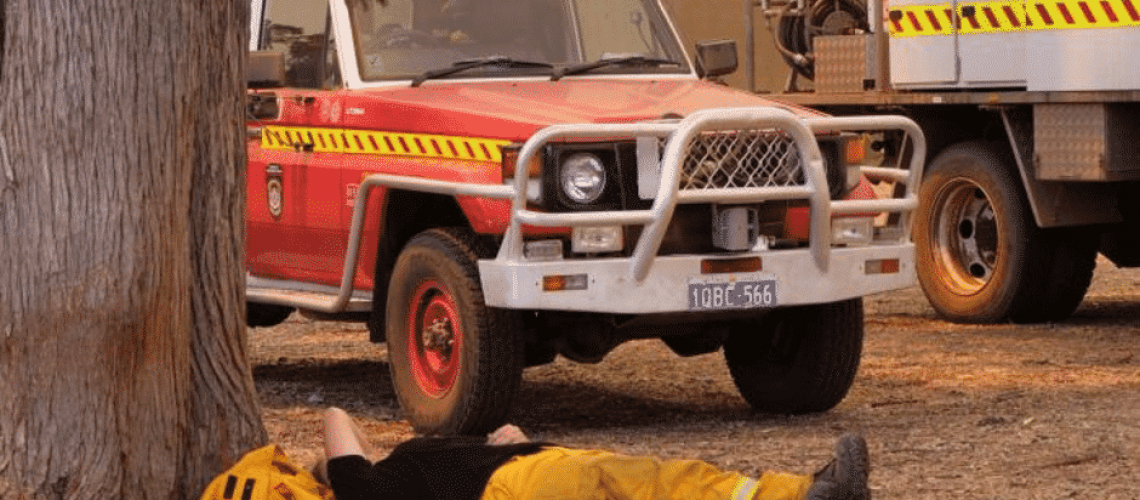This year, the Western Australian Government collected $405m from landowners via the Emergency Services Levy (ESL) that we all pay with our annual council rates. Despite the total number of paid staff (firefighters and administration combined) being less than 10% of the number of registered bush fire volunteers, more than half of the ESL ($233m) was spent on the professionals in employee benefits.
Out of what’s left only $33m will go back to Local Governments to fund both the volunteer Bush Fire Brigades and State Emergency Service Units for which they are financially responsible. The total amount spent on WA’s 560 volunteer Bush Fire Brigades was just $22m – a little shy of 6% of this year’s total ESL. On any front bar pub test, such numbers would see the patrons howl in protest and call for political heads to roll.
However, it gets worse. One of the great injustices with the current system is our State’s volunteers who are doing an incredible amount of work in saving the vast majority of property and lives are having to pay for the privilege of volunteering their time, by also having to write a cheque for their annual household $84 – $441 contribution to the Emergency Services Levy.
Our volunteers are volunteering to help protect the community and in many cases are putting their own funds into buying additional protective gear, while having the government diverting the majority of every dollar raised to fund the unionised workforce who demand access to the best available equipment, gymnasiums and other generous employment conditions.
According to last year’s Department of Fire and Emergency Services (DFES) annual report, $375m went into “training and frontline services”. Over the last 12 months, those funds made a difference by helping to save 1289 homes, of which the majority were in the metropolitan area. But, DFES also records our volunteers attending 9792 incidents, the majority of which were in the regional areas.
So, even overlooking the thousands of smaller local incidents that are never sent to DFES, 10 to 1 of the incidents were in the regions, but only 1 in 10 of the dollars allocated went to the volunteers who are also on the front line.
While there are no doubt endless logical reasons for the difference including the costs of DFES head office being based in Perth, specialist high rise and chemical firefighting equipment based in Perth, the training of career firefighter happens in Perth, still, something does not sound right in how the funds are being split up.
We need a new simple formula to redress the imbalance. We could start by allocating 25%, or $100m a year to the volunteers to fund a dedicated a rural fire service as recommended by the Ferguson Report following the Waroona fires. Also, and more importantly, establish a grant system that allows rural fire associations to be rewarded for their efforts and shires to buy their own machinery and equipment, look at retaining retired DFES trucks within in the community and enable the building of large strategic water reserves.
One idea that has come out of a Victorian report is for ratepayers who devote volunteering time to be given a rebate on the ESL that they pay. With the average household ESL in WA at around $200 the total cost to the state government if it was paid to all our volunteers would be around $4m a year, just 1% of the $400m ESL bucket. On an hourly rate per volunteer, it would equate to around $2 an hour for what our volunteers on average put in, a fraction of what our professionals are costing us, not to mention the value of lives, property, livestock and the environment they protect.
An additional idea could be an incentive for our farmers aimed at encouraging them to upgrade their farm firefighting units and to place specialist equipment like graders on standby for community access in case of a large fire. This can be done by duplicating the federal governments $50m drought water scheme whereby they offer a 25% rebate to farmers on any money spent drought-proofing their farms up to a total value of $100,000.
If we can encourage farmers to add a 2000 lt trailer fire unit to their 500lt farm tray back unit, or add a dedicated 8,000 lt truck unit to their towed unit or to purchase a grader it would make for a sizeable addition to our already formidable farm-based fire fleet. If 1000 farmers invested $8000 a year on upgrading their fire rigs, the cost to the government under a 25% rebate scheme equates to $2m/pa or just 0.5% of the ESL.
A separate fund should also be established for brigades to buy specialised equipment that they deem important. It could be a drone, a grader, a dozer or ex mine water trucks. It is time to move past the government knows the best attitude of simply equipping all brigades with the same very expensive trucks with their limited water holding capacity.
The next challenge is how to track who is a volunteer and how much time they invest in helping their community. At the moment, we don’t have a State-wide current date register of volunteers, nor do we know how an individual volunteers in time to each brigade. Without such information, it is impossible for the ATO or the state treasury to offer rebates linked to people’s time. Up until now, there was no foolproof way of doing this, thus giving the government a convenient excuse to simply ignore our volunteers and continue to focus on the career firefighters.
The underfunded and important Bushfire Volunteers Association is moving to change all this and will soon launch some innovative new digital projects that will track the time volunteers spend fighting fires.
We also need to double the number of volunteers. This will take a comprehensive new policy approach which needs to be far more sophisticated than the government knows best that has been the hallmark up until now. Properly funding the Bushfire Volunteer Association would be a great start. Funding brigades to undertake fire mitigation burn-offs and creating mobile brigades out of our retired grey army would help build numbers offseason, who are readily available during the fire season.
The final part of the equation is to undertake a review of water reserves across the Wheatbelt and great southern. In hot dry years, we are running short of strategic water reserves. The government needs to ensure we have the town dams and tanks fully equipped and available to fight fires over the longest and hottest droughts. With no water, we have no hope of protecting our farms, communities and environment.
So, between a rebate of property owners ESL, paying retirees and brigades to undertake cool-season burns, rebates to farmers who upgrading their fire rigs, by allowing the purchase of specialised equipment, providing funds for brigades to buy drones, graders and tankers, conducting a review of water supplies, accessing of funds for shires to build new strategic water reserves, supporting the volunteers association to double numbers and creating a dedicated rural fire service we can enhance our already formidable firefighting service to cater to today’s heightened fire risks.
Before the next big fire tragedy in Western Australia, the state government needs to change the funding mix to triple the amount from 1 dollar in 12 ($33m) to 1 in 4 ($100m) of the ESL to directly support our volunteers and fire response across the state. The goal should be to double the number of volunteers, the equipment they have access to and our strategic water reserves by 2025.











